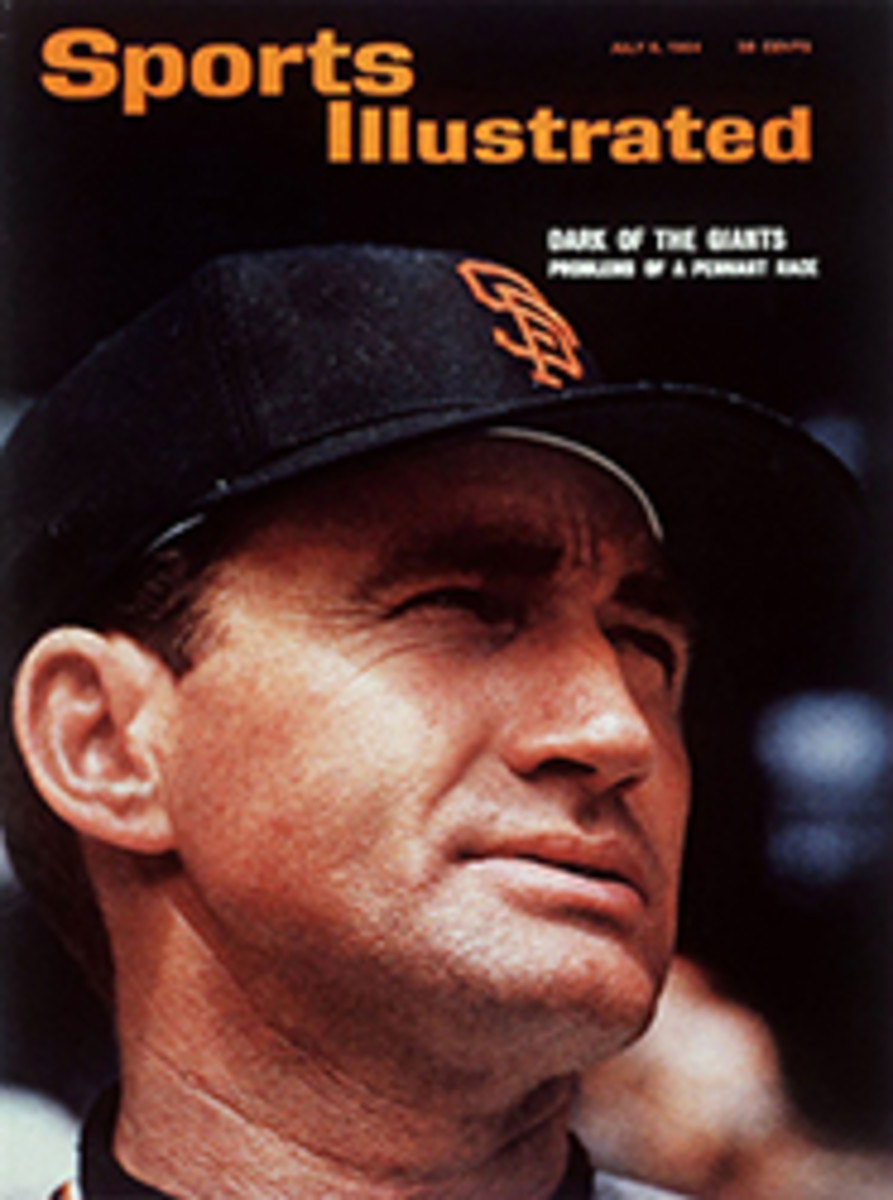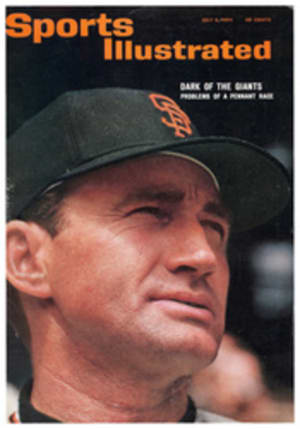
Four X eight = crew of the decade
A crew like that comes along once in a decade," said Pennsylvania's Rowing Coach Joe Burk a month ago after watching the Harvard varsity eight pull away from every crew it rowed against. At that time most eastern coaches were inclined to agree with Burk that Harvard was the best ever—but that was before any of them had seen California.
There had, of course, been rumors from the West Coast that a remarkable boatload from the University of California had been passing flotsam, swift fish and rival boats as if it were diesel powered. But it was not until California came to Syracuse, N.Y. two weeks ago and, using short, crisp strokes—39 of them each minute—rowed away from some of the best eastern boats in the IRA Championships on Onondaga Lake that there was reason to believe Harvard might have a real rival. To rephrase Penn's Burk, it began to seem as though crews like that come along twice in a decade and, apparently, at the same time.
Next week, as the U.S. Olympic trials get going on New York City's Pelham Bay, the experts are beginning to suspect they may have to increase their estimate of the number of Olympic-caliber crews to three or four as two sleepers from the Schuylkill River make their strength known. One of these is the veteran Vesper Boat Club—a virtually new outfit since Bill Stowe joined it at stroke. The other is Joe Burk's own extracurricular crew, the College Boat Club of Pennsylvania. This boatload, which Penn's coach has been quietly marshaling on the banks of the Schuylkill since early spring, has consistently beaten his college crew by about three lengths over the Olympic distance—a margin, Burk notes happily, exactly equal to that by which Harvard beat Pennsylvania in the Adams Cup race.
The dozen other boats involved in the trials may just as well stay home. When the trials are over, one of the four just listed will certainly have proved itself the authentic boat of the decade and be on its way to Tokyo. Which one it will be, not even Joe Burk dares say. "Flip a coin," he suggested the other day. "They're all that good." And because they are that good, the United States probably will win back in Tokyo the place it lost in 1960 as the top rowing country in the world.
For 40 years betting against an American eight-oared crew in Olympic competition was like betting against the Yankees, but as Robert Harron, former assistant to the president at Columbia and an old crew buff, points out, the natural by-product of success is complacency. That complacency was shattered in Rome, when Germany's Ratzeburg Rowing Club trounced America's entry—a much-touted Navy crew. This was followed by a series of similar calamities as American crews faced other European competition. After the initial shock wore off, U.S. coaches began to study the new rigs, stubby blades and high-speed stroking of the foreign crews. It was a type of rowing that had the old school harumphing in their alumni dinner soup. But while they harumphed, coaches like Harvard's Harry Parker, Penn's Burk and California's Jim Lemmon were sending to England and Germany for shovel oars, and indoctrinating their oarsmen in the theory of the high stroke. As Harron notes, a new philosophy of simple speed and endurance, that had already been put to good use by middle-distance runners was absolutely necessary.
"Prerace strategy in a 2,000-meter race is for the birds," Harron says. "You row as high and as fast as you can without losing control of blades, power and slides. Then you row even faster." For the crews that used this tactic, the effect was startling.
Burk, the most ardent proponent of this exacting approach, was unable to use it with his Pennsylvania crew simply because it was too difficult for them. But Burk knew oarsmen who had manned his shells in recent years and had the strength and skill to master it. Club crews are often scoffed at by the college crowd, which feels that any new crew worth its salt must be neck deep in ivy. But the men who have won seats in Burk's club boat are not old codgers taking an occasional spin up the Schuylkill for exercise. They are, for the most part, the cream of Burk's Penn crews since 1959. And though they are now professionally involved in soldiering, teaching and other vocations, they are more mature, stronger and more poised than the college boys and—according to Burk—"deadly serious."
California's often irascible Jim Lemmon is a coach equally anxious to redress U.S. honor at Tokyo. "Damn it all, why don't you writers stop calling our style European," he snapped at reporters in a fit of patriotic fervor last week. "Call it the Joe Burk style. He's been using it for years."
Lemmon hasn't been so peevish since 1960, a year his California crew came East to annihilate the IRA field—which may augur well for California. That year, Lemmon's crew lost out in the Olympic trials to Navy, a boat they had already beaten more than once.
Smaller than the football types that Lemmon usually brings East, the current California crew is modeled in style and build even closer to the Ratzeburgers than Harvard, though Lemmon insists that he has never seen the Germans row. The new crop of Californians lacks the elegant precision displayed by Harvard. Sprinting over the last 500 meters in the IRA at 41 strokes a minute, they looked to observers like men frantically warding off a swarm of angry wasps, but the observers also noticed that the Bears's gold-tipped blades were not just making passes at the surface of Onondaga Lake, as many oars do when swept too fast. They were digging in deep and crisp. "Any boat that can row 41 strokes a minute—and with power—doesn't need precision," said one coach. "All it needs is a finish line."
While California was startling the East at Onondaga, Harvard was off at New London rowing a private and one-sided race against its old adversary Yale over a four-mile course—a course more than twice as long as the Olympic 2,000 meters. Could they get in shape for this long race and then get back in trim for the shorter distance? The answer, from at least one authority, Bob Harron, was a resounding yes. "The mileage Harvard put under its boat and the long trials over the four-mile course," he says, "may have given this Crimson crew even more power, stroking rhythm and condition."
Twice in the Yale race Harvard utilized a "big twenty"—20 power strokes designed to pull a boat away from an opponent in the heart of a race. Usually a crew will use 10 such strokes. The fact that Harvard used twice that number, and twice in the same race, gives some indication what it is capable of. "We had to profit from it," Harvard's coach says. "We adjusted very well to the longer distance and we didn't lose any speed." A relaxed, eager crew, the Harvard oarsmen themselves are confident of beating the California boat, not in spite of the four-mile race but because of it. As rival Joe Burk said recently, "Remember, a change of pace usually helps any athlete. You can go stale from doing the same thing over and over."
All year long, Harvard's most effective ploy has been to jump away to a quick lead. In a 2,000-meter race, the result is often determined right there. "But we got away faster against Yale than we did at the Eastern Sprints," said Parker, "which pleases me greatly." This kind of spirit will be invaluable against California, which also habitually gets off to a quick start.
For those who like to find the key to the future in subtler ways, the most significant signpost may lie in the fact that at Red Top, Harvard's famed crew training headquarters in New London, the battle cry—for the first time in 113 years of Harvard rowing—is no longer "Beat Yale!" It is "Win the Olympics!"
PHOTO
THE GOLDEN BEARS LAUNCHED THEIR OLYMPIC THREAT AT THE IRA CHAMPIONSHIPS

